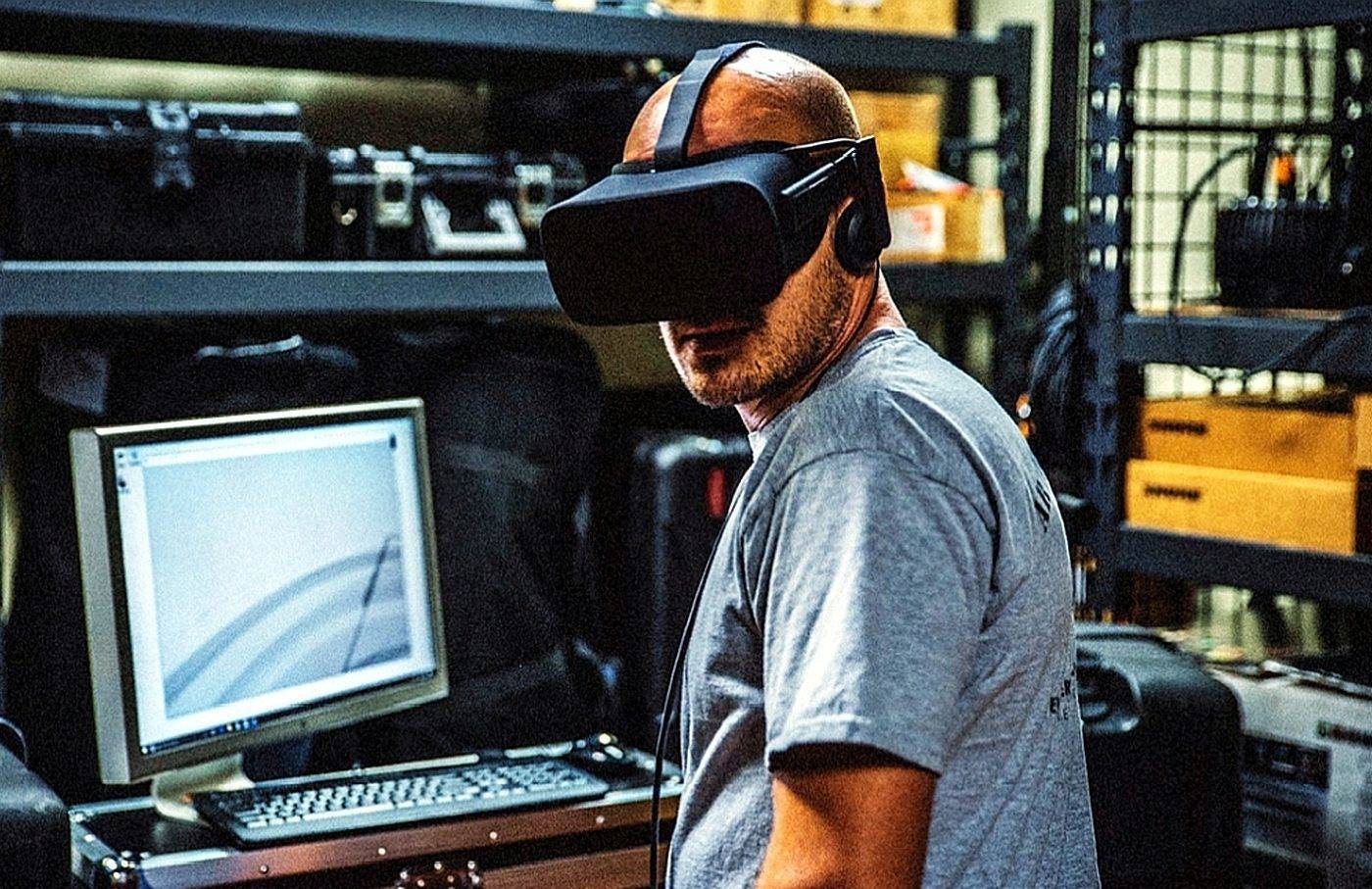Wie können wir helfen?
Follow-up instructions for working safely with crane systems

Table of contents
introduction
A crane system is used to transport heavy, usually very unwieldy loads. On the one hand, it relieves the burden on employees and protects their back health, but on the other hand, it also poses new risks. What are special features and dangers that managers and employees have to pay attention to?
The best-known forms are probably the gantry crane or bridge crane and the simple rail trolley. The difference between these devices is the ability to move in the horizontal direction. A simple rail trolley can only be moved horizontally on one axis, while a bridge or gantry crane can be moved on two axes. However, both have one thing in common: Both types can be used to move loads in a vertical direction. Exactly these points, the ability to move horizontally in at least one direction and the ability to lift and lower a load, are what define a crane.
This does not mean that a crane has to be operated mechanically. Even a simple rope pulley or chain hoist on a trolley, i.e. a lifting device that can be moved horizontally, constitutes a crane. This means that even such simple constructions are subject to the Machinery Directive and must be tested and approved accordingly.
Who is allowed to operate the crane?
The accident insurance providers determine which people are allowed to operate cranes in BGV D6. In principle, only insured people are allowed to operate cranes in the commercial sector. Crane driver: But there are a few more points that have to be fulfilled inside. must:
- Minimum age 18 years
- Physical suitability (people who have very poor vision or hearing are often unsuitable for these tasks)
- Psychological suitability
according to the requirements of the workplace.
Health suitability can be determined by the company doctor in accordance with examination principle G 25. Further suitability should always depend on the complexity of the crane operator's task. It plays an important role that crane operators reliably carry out their tasks while observing safety rules. Driving a crane in particular involves a lot of responsibility, as you can seriously injure employees as well as cause significant property damage. Finally, crane operators must be trained in operating and maintaining the crane system they are supposed to control and have demonstrated their ability to do so. Initial in-person instruction as well as follow-up instruction must always be documented.
Check cranes daily before and after use
In order to rule out dangerous situations caused by defective or damaged crane parts, the system must be checked once a day before commissioning; it is also recommended to check it briefly after use. The crane should first be checked for any obvious defects. The following checklist can be used for this:
Checking the crane: Are these requirements met?
- Is the hoist rope not resting correctly on the rope drum?
- Does the hoist rope have any obvious damage?
- Are the control devices damaged?
 Is there any other damage to the crane, running rails, supports or anchoring in the ground?
Is there any other damage to the crane, running rails, supports or anchoring in the ground?- Is there any damage to the lifting device(s)?
- Are there loose objects on the crane that could fall?
In the event of defects, such as a severely damaged hoist rope, damage to the anchoring, or other serious defects that endanger safety, operation must be stopped immediately. Otherwise you will endanger your life and those of your colleagues!
The crane operators must either eliminate other defects that are discovered before commissioning themselves (loose objects) or report them to the manager and a possible replacement. Defects that become known must be remedied or removed promptly. Loose objects and safety-relevant defects must always be eliminated before the crane is put into operation.
Observe important safety principles
The maximum load capacity must never be exceeded, even for a short time. No people are allowed to be transported.

And another main danger in halls where a crane is used is falling objects. Therefore, for areas where a crane is used, aMandatory helmet wearingare carefully examined and often ordered as part of the risk assessment. A simple falling screw would be enough to seriously injure an employee. In order to fundamentally avoid such incidents, every load must be checked for loose objects before each lifting process.If you move loads by hand, wear gloves and be sure to wear safety shoes.
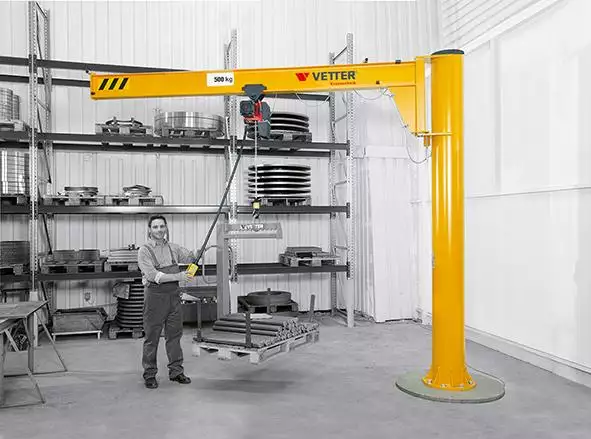 Under no circumstances should loads be lifted over people using non-positive lifting devices - i.e. devices such as a magnet or vacuum lifter - because this poses a danger to life and limb, no matter how heavy or light a load is. The reason for this is simple: In the event of a power failure, a friction-locking lifting device can no longer hold the load securely and the load consequently falls.
Under no circumstances should loads be lifted over people using non-positive lifting devices - i.e. devices such as a magnet or vacuum lifter - because this poses a danger to life and limb, no matter how heavy or light a load is. The reason for this is simple: In the event of a power failure, a friction-locking lifting device can no longer hold the load securely and the load consequently falls.
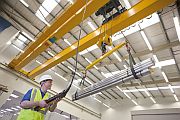 Even with positive lifting devices such as grippers or tongs, you should avoid lifting loads over people. Here too, material failure or inadequate fastening can never be completely ruled out. It is therefore essential for the crane operator to check whether there are people in the danger area before every lifting operation that leads over walkways or workstations. If there are people there, the lifting process must be interrupted and the person in the danger area must be warned accordingly.
Even with positive lifting devices such as grippers or tongs, you should avoid lifting loads over people. Here too, material failure or inadequate fastening can never be completely ruled out. It is therefore essential for the crane operator to check whether there are people in the danger area before every lifting operation that leads over walkways or workstations. If there are people there, the lifting process must be interrupted and the person in the danger area must be warned accordingly.
7 tips for carrying loads correctly
- In order to avoid dangerous situations such as lifting over people, it is of great importance that the crane operator always
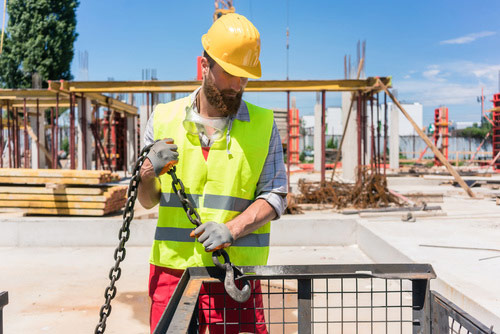 Has visual contact with the load or the load-carrying (lifting) device. Otherwise, he can put colleagues in great danger or seriously damage the facility.
Has visual contact with the load or the load-carrying (lifting) device. Otherwise, he can put colleagues in great danger or seriously damage the facility. - Always lift the load only as high as necessary
- Always move the load as deep as possible.
- If the load has to be moved on the ground and guided by the crane driver,It may only be transported from behind and at hand height. So escapes
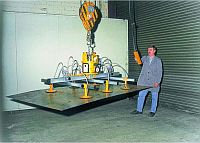 There is a risk that the crane operator will be trapped between the load and another object. If the load is transported above hand height, there is a risk, especially with non-positive load handling devices, that the load will fall onto the employee if the device fails or there is a power failure. In addition, the load could begin to swing and injure the employee's head.
There is a risk that the crane operator will be trapped between the load and another object. If the load is transported above hand height, there is a risk, especially with non-positive load handling devices, that the load will fall onto the employee if the device fails or there is a power failure. In addition, the load could begin to swing and injure the employee's head. - If there is no visual contact with the load, the crane operator must use one or, if necessary, several load stoppers. You can work with or without visual contact with the attacker. If work is carried out without visual contact, there must be a call or radio connection between the crane operator and the load sling.Because without communication, safe work is not possible.
- If several load slingers work together, it must be decided in advance who will give signals to the crane driver. Otherwise, dangerous situations can arise due to misunderstandings. Here again, communication is the be-all and end-all, because crane work is teamwork.
- If there is visual contact, work can also be carried out without radio communication. However, a few hand signals should be discussed beforehand. BGI 556 gives you an overview of the basic hand signals.


